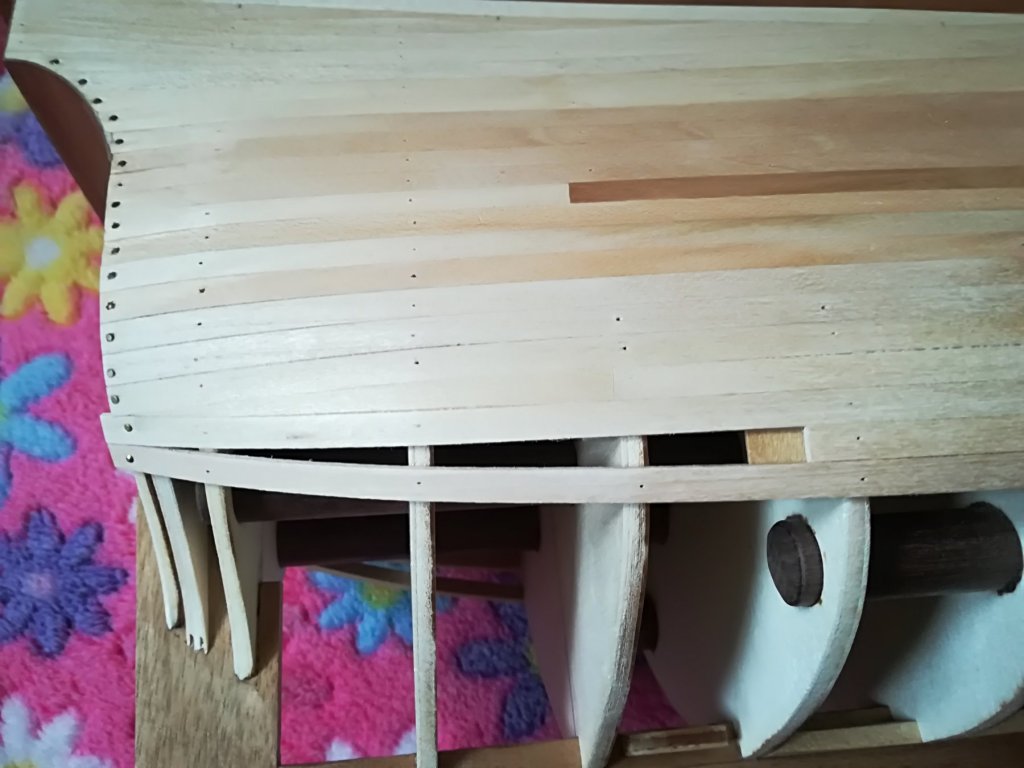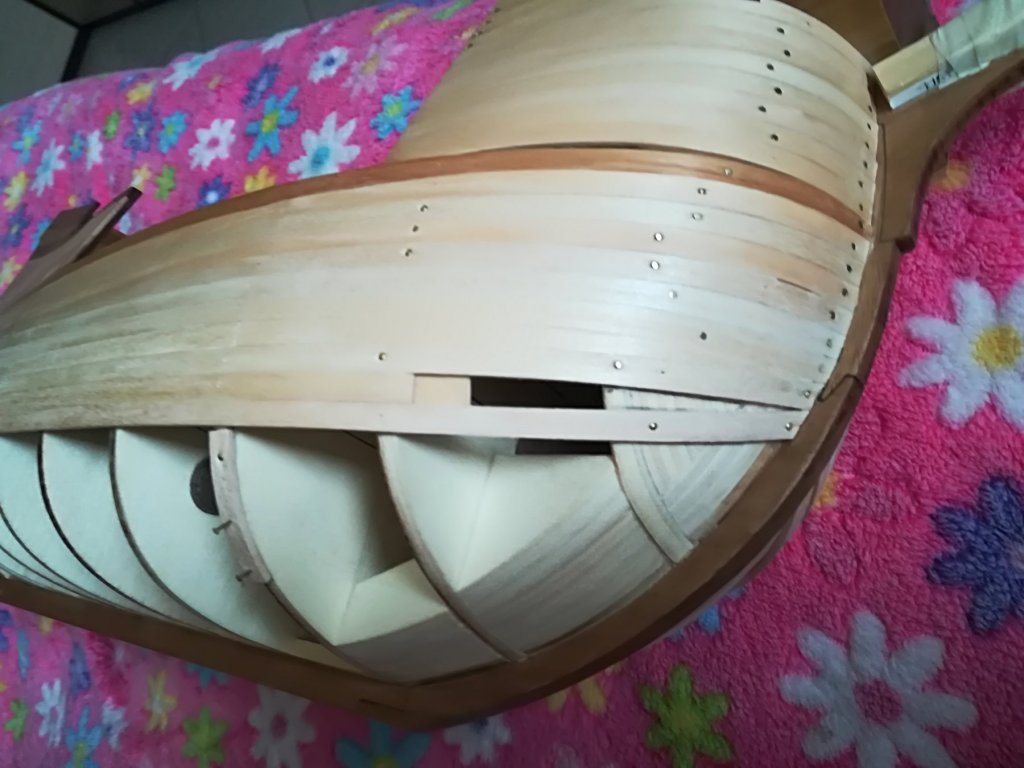Monday, January 15, 2018
I'm working on three fronts, making some experimentation to see the possible results.
1) Planking part of the stern post with the second and final cherry wood strips.
The photo here below shows the final result of how the hull should 99% look in its outer part, after the second planking. Live is much more realistic and I like it very much. For now the experiment ends here, but the work will continue on this track at the right moment.
01 Ragusian Carrack/15012018/IMG_20180115_204048.jpg

2) Removal of fake bulwarks stanchions of the midship bulkheads and construction of the internal side of the bulwarks
Here the work has just begun and consists in removing the fake stanchions on the proper bulkheads. In anticipation of this task I proceeded to make the bonding on these elements rather labile. Once the piece has been removed, I proceed to glue a strip (equal to that used for the planks) inside the bulwarks side, but positioned perpendicularly. The thickness now doubles but above all the strength of this area takes enormous benefit from the crossing of the wood grain. Work to be performed step by step.
02 Ragusian Carrack/15012018/IMG_20180115_204118.jpg

3) Start installation of the first planking on the main deck.
This operation is similar, apart from the dimensions, to what was done on the higher deck at poop. For technical reasons, the planking will be applied in two pieces. At the moment I'm starting this activity and I still have to understand the best way to proceed, but I think everything will be pretty good.
03 Ragusian Carrack/15012018/IMG_20180115_204129.jpg

04 Ragusian Carrack/15012018/IMG_20180115_204245.jpg

That's all for today, politely, Jack.
I'm working on three fronts, making some experimentation to see the possible results.
1) Planking part of the stern post with the second and final cherry wood strips.
The photo here below shows the final result of how the hull should 99% look in its outer part, after the second planking. Live is much more realistic and I like it very much. For now the experiment ends here, but the work will continue on this track at the right moment.
01 Ragusian Carrack/15012018/IMG_20180115_204048.jpg
2) Removal of fake bulwarks stanchions of the midship bulkheads and construction of the internal side of the bulwarks
Here the work has just begun and consists in removing the fake stanchions on the proper bulkheads. In anticipation of this task I proceeded to make the bonding on these elements rather labile. Once the piece has been removed, I proceed to glue a strip (equal to that used for the planks) inside the bulwarks side, but positioned perpendicularly. The thickness now doubles but above all the strength of this area takes enormous benefit from the crossing of the wood grain. Work to be performed step by step.
02 Ragusian Carrack/15012018/IMG_20180115_204118.jpg
3) Start installation of the first planking on the main deck.
This operation is similar, apart from the dimensions, to what was done on the higher deck at poop. For technical reasons, the planking will be applied in two pieces. At the moment I'm starting this activity and I still have to understand the best way to proceed, but I think everything will be pretty good.
03 Ragusian Carrack/15012018/IMG_20180115_204129.jpg
04 Ragusian Carrack/15012018/IMG_20180115_204245.jpg
That's all for today, politely, Jack.







